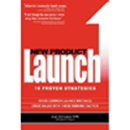A properly functioning cream yeast system can ensure product quality
and food safety. However, bakers need to remain diligent in maintaining
these systems to get the best results. In a question-and-answer
session, Craig Baumer, technical development manager, AB Mauri
Fleischmann’s, Chesterfield, Mo., provides some helpful hints in
getting the most out of your cream yeast systems.
Quality assurance starts with the beginning of the process, and that’s often where a lot of variables can impact the final product. That’s certainly the case when producing yeast-raised baked goods. A properly functioning cream yeast system can ensure product quality and food safety. However, bakers need to remain diligent in maintaining these systems to get the best results. In a question-and-answer session, Craig Baumer, technical development manager, AB Mauri Fleischmann’s, Chesterfield, Mo., provides some helpful hints in getting the most out of your cream yeast systems.
Snack Food & Wholesale Bakery: What challenges do bakers face with bulk ingredient handing and using a cream yeast system, and what solutions do you provide?
Craig Baumer:Bakeries rely on AB Mauri Fleischmann’s to provide a credible, third-party evaluation of their cream yeast tank systems. A cream yeast audit looks at the entire system. We check pumps, the flow rate, cooling capabilities and watch for a CIP [clean-in-place] cycle to ensure that the system is operating efficiently. This process is quite involved. For example, we examine the flow meters because they need to be properly calibrated to ensure that [the] same amount of yeast is added. In addition, the cooling system needs to work properly. Optimal yeast storage temperatures should always be less than 45°F. AB Mauri Fleischmann’s helps educate bakers on the importance of properly cleaning between loads to avoid microbial activity as well as proper control of the cooling system. Good processes assure proper food safety and product quality, and the cream yeast audits that we conduct for bakers allows us to work side-by-side with our customers, so that the real beneficiary is the consumer.
SF&WB:How does a cream yeast system provide product control?
Baumer:A cream yeast audit assists with proper product control because it provides an accurate report card on how the system is operating, and more importantly, it gives the baker recommendations for corrective actions. The No. 1 thing that we see during an audit is that the CIP system has not been cared for properly. Proper sanitation is key. One part of a CIP system works similar to a showerhead. It is a sphere-like attachment at the end of the pipe that sprays cleaning solutions in all directions for even dispersion throughout the vessel or system that is being cleaned. Sludge can build up in this piece of equipment, and the spray balls should be removed and cleaned out as part of a regular maintenance program.
SF&WB: Because of the constantly changing marketplace, bakers are looking for equipment that can produce relevant new products to adjust to consumer needs. How does this system provide or allow for innovation?
Baumer:Properly maintained cream yeast systems allow for more focused efforts in product innovation versus worrying about the impact on quality by raw materials.
SF&WB: How has the technology improved since its introduction?
Baumer:Our company helped develop cream yeast system technology in the 1980s, and computer technology has advanced significantly since then. Today’s technology can actually monitor the system through improved PLCs [programmable logic controllers] and provides alarms when something goes wrong. As part of our cream yeast audit, we investigate those alarms and help provide recommendations on how best to avoid them in the future.
SF&WB:Could a baker that purchased this type of system when it first became available do anything to retrofit it or make it better?
Baumer: In addition to the new computer technology, bakers need to look at all parts of the system. For example, pumps should always be properly maintained, so that accurate amounts of yeast are delivered consistently for each and every batch. A baker wants the yeast to make its way to the blender load and wants to avoid having the pumps leak onto the floor.
SF&WB:What is the return on investment on such a system? How can a system like this be used to control the process and control costs?
Baumer: One of our areas of expertise at AB Mauri Fleischmann’s is fermentation. When a baker works with us they learn that quality means more to us than just delivering a consistent activity in yeast. We believe that the entire process needs to be optimized, and this is why we offer cream yeast audit consultations. As part of the consultation, AB Mauri Fleischmann’s will check pumps, flow rates, cooling capabilities, CIP procedures and all aspects of the process so that it can be optimized.
Go to www.abmf.com for more information.
Get our new eMagazine delivered to your inbox every month.
Stay in the know on the latest snack and bakery industry trends.
SUBSCRIBE TODAY!Copyright ©2024. All Rights Reserved BNP Media.
Design, CMS, Hosting & Web Development :: ePublishing



